- Spirituality
- Unexplained

The Heroic Legend of Beowulf
Author: Ancient Theory
Published: November 17, 2023 / Updated: December 3, 2023
This page may contain links to products/services. Ancient Theory may earn a commission on sales made through these links.

- The Life and Adventures of Beowulf
- Literary Themes and Significance
- Connections to Norse Mythology and Other Epics
- Modern Adaptations and Cultural Impact
- An Epic Legacy
Beowulf, an epic poem written in Old English, is not only a cornerstone of Anglo-Saxon literature but also a window into the early medieval world. Its narrative, centered around the hero Beowulf and his legendary feats, offers a rich blend of historical insight, mythological fantasy, and profound thematic exploration.
The World of Beowulf
Beowulf’s narrative is set in a time when heroic deeds and loyalty were highly valued. The story unfolds in Scandinavia, primarily in what are now Denmark and Sweden. This geographical setting is important as it reflects the close cultural and historical ties between the Scandinavians and the Anglo-Saxons, who likely brought the tale with them to the British Isles.
Beowulf’s Upbringing and Personal Qualities
Early life and ancestry.
Beowulf’s early life is shrouded in the mists of legend. He is presented as a member of the Geatish society, with a lineage that includes warriors and nobles. His upbringing, therefore, would have been steeped in the martial traditions and heroic values of his people.
Personal Attributes
Beowulf is portrayed as the epitome of the ideal warrior. His strength is almost superhuman, and his skills in combat are unmatched. However, what truly distinguishes him are his leadership qualities, his sense of justice, and his unwavering commitment to the well-being of his people. His bravery is matched by his wisdom, and his actions are guided by a deep sense of honor and duty.
Detailed Narrative of Beowulf’s Heroic Feats and Battles
Grendel’s terror and the battle at heorot.
Beowulf’s first heroic feat involves confronting Grendel, a creature born of sin and malice. The terror brought by Grendel to Heorot, a symbol of community and fellowship, underscores the monstrous nature of his acts. Beowulf’s battle with Grendel is unique as he chooses to fight the monster without weapons, relying solely on his superhuman strength. This encounter ends with Beowulf ripping Grendel’s arm off, a feat that demonstrates not just physical prowess but also his deep understanding of honor and fair play in combat.
The Underwater Duel with Grendel’s Mother
The second challenge Beowulf faces is against Grendel’s mother, seeking vengeance for her son’s death. This battle, taking place in her underwater lair, adds a mystical element to the narrative. Beowulf’s descent into the watery depths is symbolic of a journey into the unknown, facing the darker aspects of life and death. The fight with Grendel’s mother is fiercer, requiring Beowulf to use a magical sword. This battle illustrates the hero’s resilience, adaptability, and his willingness to face death.
The Dragon and the Final Sacrifice
In his final act of heroism, an aged Beowulf confronts a dragon that threatens his kingdom. This battle is markedly different from his previous encounters. The dragon, a traditional symbol of greed and a guardian of treasure, presents a challenge that culminates in a pyrrhic victory for Beowulf. He succeeds in killing the dragon but is mortally wounded. This final battle is a poignant exploration of the inevitability of death and the legacy of a hero.
Language and Style
The poem is notable for its use of alliteration, a stylistic feature typical of Germanic poetry. Its language is rich and evocative, full of kennings (compound expressions with metaphorical meaning), which add a unique flavor to the narrative.
The Hero’s Journey and Its Influence
Beowulf’s hero’s journey.
Beowulf’s story can be seen as an early form of the Hero’s Journey, a narrative structure that has been influential in storytelling across cultures. His journey includes elements such as the call to adventure (his decision to fight Grendel), crossing the threshold (traveling to Heorot), trials and tribulations (battles with Grendel, his mother, and the dragon), and the return (his death and the legacy he leaves behind).
Themes of Heroism and Morality
Beowulf explores the hero’s journey, not just through physical battles but also through his moral choices. Themes like loyalty, bravery, and the struggle between good and evil are central to the narrative. The poem also reflects on the transient nature of fame and the inevitability of death, adding a layer of philosophical depth.
Influence on Subsequent Literature
The structure and themes of Beowulf’s tale have influenced countless stories and myths that followed. The concept of a hero facing insurmountable odds, undergoing personal growth through trials, and ultimately impacting their world is a pattern seen in many cultures’ folklore and literature. From classical epics like the “Odyssey” to modern fantasy like “The Lord of the Rings,” the echoes of Beowulf’s journey can be discerned. This universality of Beowulf’s story speaks to its enduring power and its ability to resonate across ages and cultures.
Beowulf shares thematic and narrative elements with Norse mythology and other Germanic legends. Characters like Sigurd/Siegfried from the Völsunga saga and the Nibelungenlied exhibit traits similar to Beowulf’s. These connections highlight a shared cultural heritage across medieval Europe.
In modern times, Beowulf has inspired a wide range of adaptations and interpretations in literature, film, and other media. Each adaptation offers a different perspective on the story, demonstrating its continued relevance and appeal.
Examples of Modern Adaptations
- Movies : The 2007 film “Beowulf,” uses advanced animation techniques to bring a new dimension to the story.
- Literature : John Gardner’s novel “ Grendel ” (1971) presents the story from the monster’s perspective, offering a fresh and philosophical take on the Beowulf legend.
The story of Beowulf, transcending its medieval origins, continues to captivate audiences with its portrayal of a hero whose courage and moral compass shine across the centuries. Its enduring appeal lies in its universal themes and its insight into a time when heroes were revered not just for their strength but for their character. Beowulf’s tale, encompassing the triumphs and tragedies of the human experience, continues to be a seminal work in the exploration of heroism and the human condition.
At Ancient Theory we only use trusted sources to document our articles. Such relevant sources include authentic documents, newspaper and magazine articles, established authors, or reputable websites.
- "Beowulf and the Critics" by J.R.R. Tolkien: Tolkien, known for his own epic tales, provides a critical analysis of Beowulf, emphasizing its value beyond mere historical interest. [ Source ]
- "Beowulf: A Translation and Commentary" by J.R.R. Tolkien: This book includes Tolkien's own translation of the poem, accompanied by his detailed commentary. [ Source ]
- The Electronic Beowulf Project: An online resource providing access to digitized manuscripts of Beowulf, facilitating in-depth study of the poem's text and historical context. [ Source ]
- "The Art of Beowulf" by Arthur Gilchrist Brodeur: This book delves into the artistry of the Beowulf poem, analyzing its structure, style, and thematic depth. [ Source ]
Similar Articles
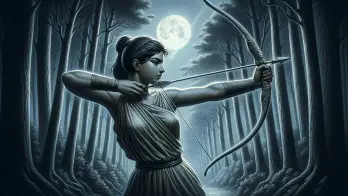
Artemis: The Moonlit Archer of Olympus

Unraveling the Mystery of the Rock Ship of Masuda: An Ancient Japanese Enigma

Did You Know That? 84 Curiosities and Weird Facts About the World In Which We Live

14 Most Haunted Places in the World: Unveiling the Spookiest Destinations

Unraveling the Mysteries of the Viracochas: Were They a Ancient Race of Humans Created by Gods?
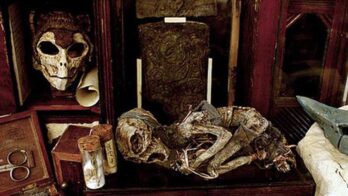
Journey into the Unknown with the Merrylin Cryptid Museum’s Encyclopedia Obscura
- My Storyboards
Beowulf Hero's Journey Summary Storyboard
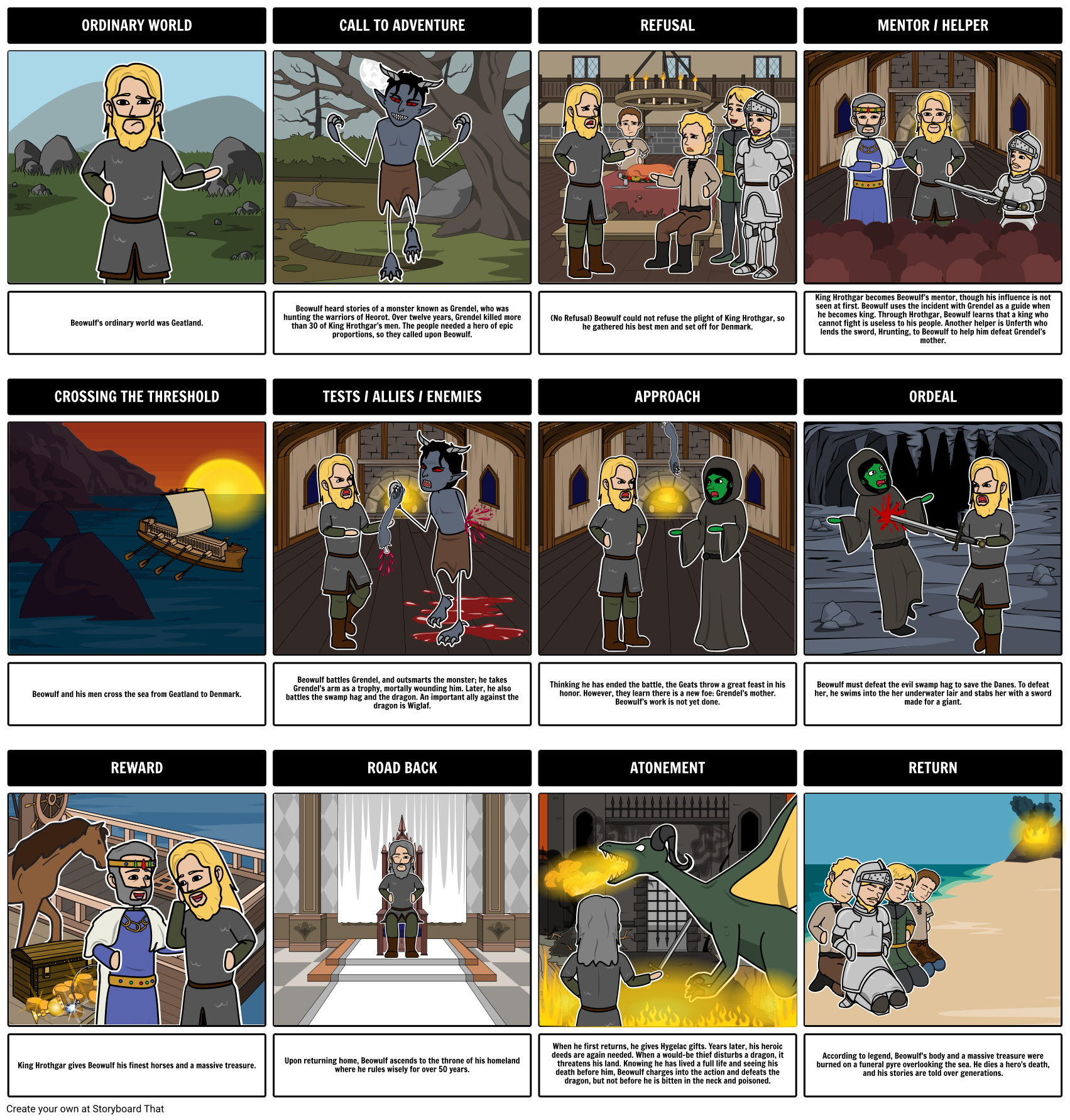
Create your own Storyboard
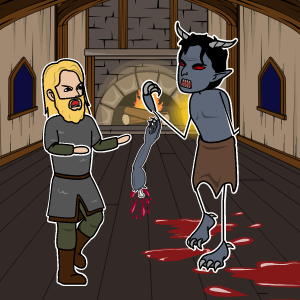
Lesson Plans by Rebecca Ray
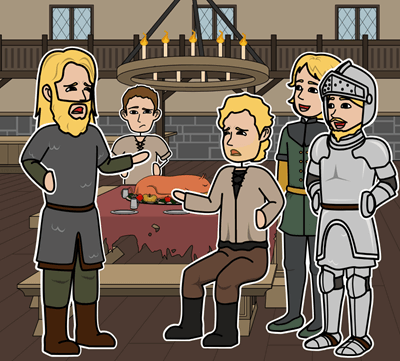
Storyboard Description
Storyboard text.
- ORDINARY WORLD
- CALL TO ADVENTURE
- MENTOR / HELPER
- Beowulf's ordinary world was Geatland.
- CROSSING THE THRESHOLD
- Beowulf heard stories of a monster known as Grendel, who was hunting the warriors of Heorot. Over twelve years, Grendel killed more than 30 of King Hrothgar’s men. The people needed a hero of epic proportions, so they called upon Beowulf.
- TESTS / ALLIES / ENEMIES
- (No Refusal) Beowulf could not refuse the plight of King Hrothgar, so he gathered his best men and set off for Denmark.
- King Hrothgar becomes Beowulf's mentor, though his influence is not seen at first. Beowulf uses the incident with Grendel as a guide when he becomes king. Through Hrothgar, Beowulf learns that a king who cannot fight is useless to his people. Another helper is Unferth who lends the sword, Hrunting, to Beowulf to help him defeat Grendel’s mother.
- Beowulf and his men cross the sea from Geatland to Denmark.
- Beowulf battles Grendel, and outsmarts the monster; he takes Grendel's arm as a trophy, mortally wounding him. Later, he also battles the swamp hag and the dragon. An important ally against the dragon is Wiglaf.
- Thinking he has ended the battle, the Geats throw a great feast in his honor. However, they learn there is a new foe: Grendel's mother. Beowulf’s work is not yet done.
- Beowulf must defeat the evil swamp hag to save the Danes. To defeat her, he swims into the her underwater lair and stabs her with a sword made for a giant.
- King Hrothgar gives Beowulf his finest horses and a massive treasure.
- Upon returning home, Beowulf ascends to the throne of his homeland where he rules wisely for over 50 years.
- When he first returns, he gives Hygelac gifts. Years later, his heroic deeds are again needed. When a would-be thief disturbs a dragon, it threatens his land. Knowing he has lived a full life and seeing his death before him, Beowulf charges into the action and defeats the dragon, but not before he is bitten in the neck and poisoned.
- According to legend, Beowulf's body and a massive treasure were burned on a funeral pyre overlooking the sea. He dies a hero’s death, and his stories are told over generations.
- Entertainment
- Environment
- Information Science and Technology
- Social Issues
Home Essay Samples Literature Beowulf
Analysis of the 12 Steps of Hero's Journey in Beowulf
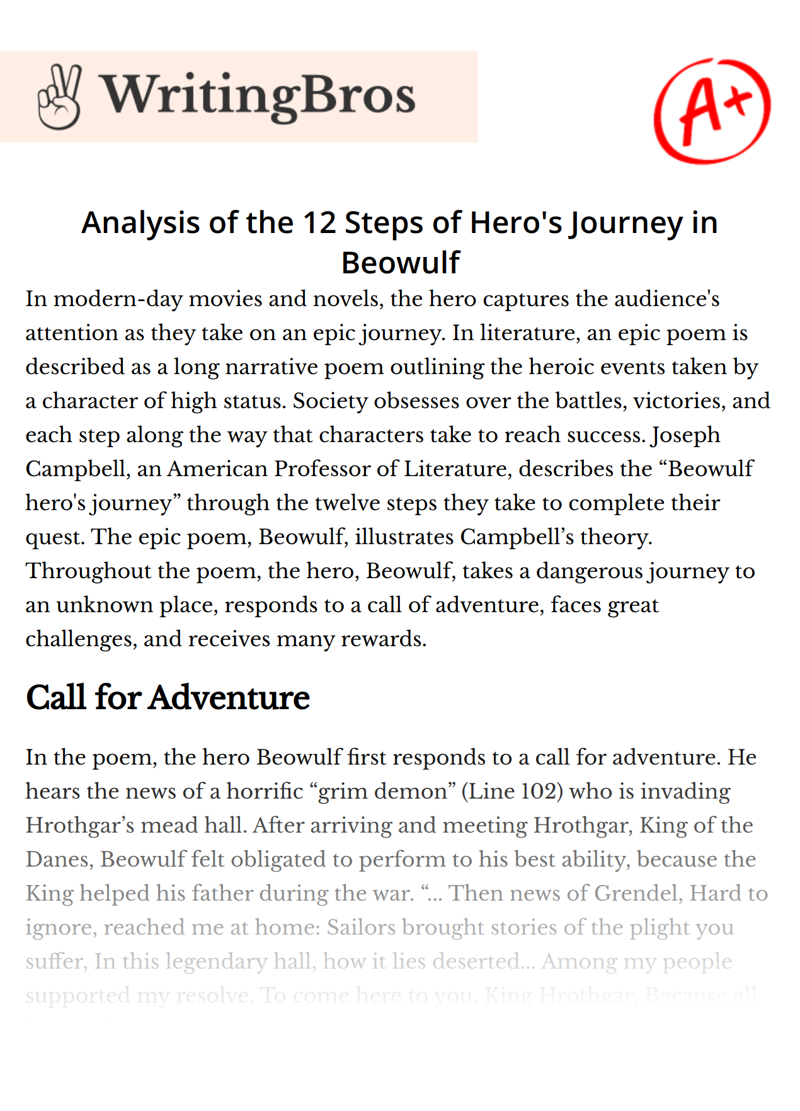
Call for Adventure
To conclude.
*minimum deadline
Cite this Essay
To export a reference to this article please select a referencing style below

- Montana 1948
- Oryx and Crake
- Waiting For The Barbarians
- Harry Potter and The Prisoner of Azkaban
- Their Eyes Were Watching God
Related Essays
Need writing help?
You can always rely on us no matter what type of paper you need
*No hidden charges
100% Unique Essays
Absolutely Confidential
Money Back Guarantee
By clicking “Send Essay”, you agree to our Terms of service and Privacy statement. We will occasionally send you account related emails
You can also get a UNIQUE essay on this or any other topic
Thank you! We’ll contact you as soon as possible.
Home — Essay Samples — Literature — Beowulf — Beowulf Heros Journey Analysis
Beowulf Heros Journey Analysis
- Categories: Beowulf
About this sample

Words: 448 |
Published: Mar 13, 2024
Words: 448 | Page: 1 | 3 min read
Works Cited
- Tolkien, J.R.R. " Beowulf : The Monsters and the Critics." Proceedings of the British Academy, vol. 22, 1936, pp. 245-295.
- Heaney, Seamus, translator. Beowulf: A New Verse Translation. W.W. Norton, 2000.

Cite this Essay
Let us write you an essay from scratch
- 450+ experts on 30 subjects ready to help
- Custom essay delivered in as few as 3 hours
Get high-quality help

Prof. Kifaru
Verified writer
- Expert in: Literature

+ 120 experts online
By clicking “Check Writers’ Offers”, you agree to our terms of service and privacy policy . We’ll occasionally send you promo and account related email
No need to pay just yet!
Related Essays
1 pages / 498 words
3 pages / 1491 words
3 pages / 1231 words
3 pages / 1443 words
Remember! This is just a sample.
You can get your custom paper by one of our expert writers.
121 writers online
Still can’t find what you need?
Browse our vast selection of original essay samples, each expertly formatted and styled
Related Essays on Beowulf
Alliteration, the repetition of initial consonant sounds in neighboring words, is a literary device that has been used for centuries to enhance the auditory experience of a text. In the epic poem Beowulf, alliteration plays a [...]
The epic poem Beowulf is known for its use of caesura, a pause or break in the middle of a line of poetry. These pauses serve to add rhythm, emphasis, and structure to the text, allowing the reader to better understand and [...]
Loyalty is a central theme in the epic poem Beowulf, which tells the story of a heroic warrior who must navigate the complexities of loyalty in order to protect his people and achieve greatness. This essay will explore how [...]
Beowulf is an epic poem that has endured through the centuries and is still studied and celebrated today. Composed in Old English, the poem tells of the heroic exploits of Beowulf, a warrior who battles monsters and dragons to [...]
Traditionally, light means good and dark means evil. This assumption is proven in many instances of Beowulf, though in all three battles we also see contradictions to this assumption. Sometimes, what we see or assume may not [...]
Beowulf, an epic poem written in old English, reflects many of the Anglo- Saxon societies ideals that we have seen. Many of these Anglo- Saxon ideals include: admiration for outstanding courage, belief in the importance of [...]
Related Topics
By clicking “Send”, you agree to our Terms of service and Privacy statement . We will occasionally send you account related emails.
Where do you want us to send this sample?
By clicking “Continue”, you agree to our terms of service and privacy policy.
Be careful. This essay is not unique
This essay was donated by a student and is likely to have been used and submitted before
Download this Sample
Free samples may contain mistakes and not unique parts
Sorry, we could not paraphrase this essay. Our professional writers can rewrite it and get you a unique paper.
Please check your inbox.
We can write you a custom essay that will follow your exact instructions and meet the deadlines. Let's fix your grades together!
Get Your Personalized Essay in 3 Hours or Less!
We use cookies to personalyze your web-site experience. By continuing we’ll assume you board with our cookie policy .
- Instructions Followed To The Letter
- Deadlines Met At Every Stage
- Unique And Plagiarism Free
Unraveling the Epic Tale of Beowulf
George J. Kelley
November 17, 2023

In the timeless epic of Beowulf, we are transported to a world of heroic warriors, terrifying monsters, and noble quests. This enthralling tale of adventure and bravery follows the legendary hero, Beowulf, as he embarks on a perilous journey to rid the kingdom of Denmark from the monstrous grip of Grendel and his vengeful mother. With its rich tapestry of action, mythos, and the battle between good and evil, the story of Beowulf captures the imagination and reminds us of the timeless power of heroism. Join us as we delve into the captivating story of Beowulf: A Hero’s Journey, step-by-step, unraveling the intricacies of this ancient tale.
Grendel’s Mother
Beowulf’s arrival in denmark, grendel’s attacks, beowulf’s boast, the battle with grendel, the battle with grendel’s mother, beowulf’s death, beowulf’s legacy, beowulf’s burial, 1. who is beowulf, 2. what is the story of beowulf about, 3. who is grendel, 4. what is the significance of grendel’s attacks, 5. who is grendel’s mother, 6. what is the “abyss” in the story, 7. how does beowulf’s journey end, 8. what is beowulf’s legacy, 9. how does the story of beowulf reflect anglo-saxon culture, 10. what makes beowulf a classic hero’s journey, 1. who is the main protagonist of beowulf: a hero’s journey, 2. what is the significance of beowulf’s arrival in denmark, 3. what are the characteristics that make beowulf a hero, 4. who is grendel, and why does he attack the people of denmark, 5. what happens during the battle between beowulf and grendel, 6. what challenges does beowulf face in the abyss, 7. how does beowulf meet his demise, 9. how is beowulf honored after his death, 10. what lessons can we learn from beowulf’s hero’s journey, the main characters.
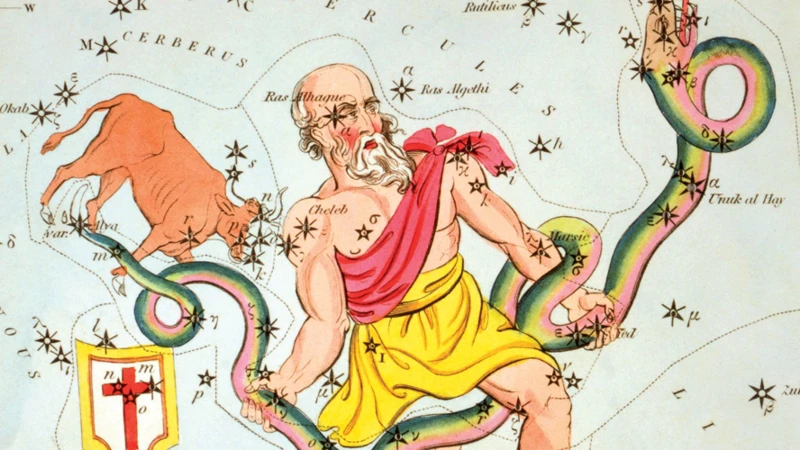
Beowulf is the legendary hero whose name is synonymous with courage and valor. As the protagonist of the story, Beowulf embodies the ideals of a true warrior. He possesses exceptional strength and fearlessness, making him a formidable adversary to any foe he faces. Beowulf’s unwavering determination and unwavering resolve drive him to protect the kingdom of Denmark from the monstrous threats that plague its citizens. His unwavering loyalty and commitment to his people are not only admirable but also serve as a source of inspiration. Throughout his journey, Beowulf demonstrates his bravery time and time again, facing deadly battles and overcoming seemingly impossible odds. He is a symbol of heroism and serves as a reminder of the triumph of good over evil. Beowulf’s legendary exploits have echoed through the ages, cementing him as a timeless hero in literature and myth.

Learn more about the mythical world of Medusa Gorgon and the influence of Ophiuchus in the realm of art.
Grendel, the malevolent antagonist in the epic tale of Beowulf, is a monstrous creature who instills fear and terror into the hearts of the people of Denmark. As the descendant of Cain, Grendel embodies pure evil and darkness. Described as a “shadow-stalker” and a “dweller in the moors,” Grendel is a creature of the night, lurking in the darkness, preying upon innocent victims. His physical appearance is grotesque, with long claws and a hideous, malformed body. Grendel’s relentless attacks on the kingdom of Denmark leave the once prosperous land in ruins and its people living in constant fear. He is driven by a deep-seated hatred for the joy and merriment found in Heorot, the grand hall of the Danish warriors. Grendel’s insatiable hunger for destruction propels him to relentlessly slaughter the warriors of the kingdom, leaving a trail of bloodshed and despair in his wake. His brutal acts of violence are motivated by his envy of human happiness and his desire to subvert it. Grendel’s presence embodies the primal forces of chaos and darkness, challenging Beowulf to confront the depths of his own courage and honor in order to overcome this monstrous foe.
Grendel’s Mother, a fearsome and vengeful creature, is a pivotal character in the epic story of Beowulf. She is portrayed as a monstrous being, dwelling in an underwater lair, seeking revenge for the death of her son at the hands of Beowulf. Grendel’s Mother is described as a powerful and cunning opponent, capable of great physical strength and dark magic. In the midst of her grief and anger, she emerges from the depths of the murky waters to terrorize the kingdom of Denmark. The battle between Beowulf and Grendel’s Mother is a climactic moment in the hero’s journey, as Beowulf confronts this formidable foe in her watery domain. The encounter tests Beowulf’s courage and strategic prowess as he dives into the treacherous waters to face the wrath of this monstrous creature. The battle is intense and fierce, with both adversaries unleashing their full strength and cunning. Ultimately, Beowulf triumphs over Grendel’s Mother, slaying her with a powerful sword that he discovers in her lair. This victory solidifies Beowulf’s position as a legendary hero and marks a turning point in his journey of self-discovery and redemption. The defeat of Grendel’s Mother paves the way for Beowulf’s subsequent reign and establishes his legacy as a hero of unmatched valor. (For more information on mythical creatures like Grendel’s Mother, check out this article about Ophiuchus and Taurus compatibility .)
The Call to Adventure
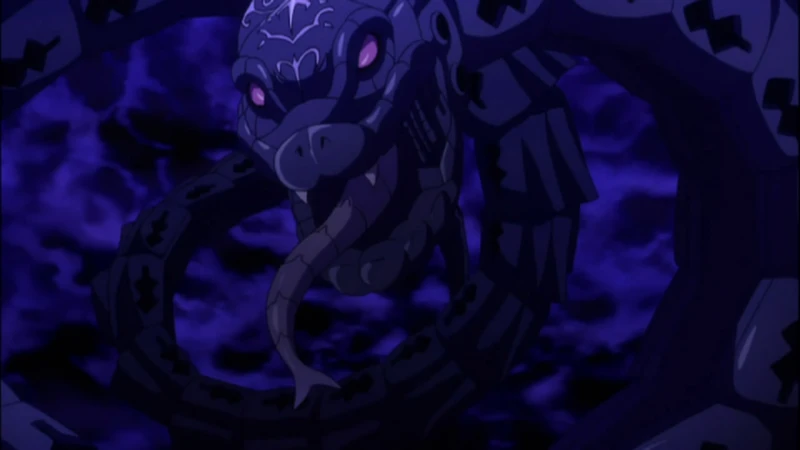
Beowulf’s Arrival in Denmark marks the beginning of his heroic journey. Upon hearing of the troubles plaguing the kingdom, Beowulf sets sail with a band of loyal warriors to assist their Danish allies. They arrive on the shores of Denmark, their longships cutting through the turbulent waters, as Beowulf’s strong presence commands attention. The Danish king, Hrothgar, welcomes Beowulf with open arms, grateful for his arrival and hopeful for the salvation he may bring. The bustling halls of Heorot, the magnificent mead hall, become the setting for Beowulf’s first encounter with the menacing Grendel. The scene is set, tension fills the air, and the stage is ready for the clash between the hero and the monster that will test Beowulf’s strength and prowess. The atmosphere is rife with anticipation as Beowulf prepares to face the daunting challenges that lie ahead, fully embodying the role of the valiant hero in his quest to protect the kingdom and defeat the forces of darkness.
Grendel’s Attacks are a pivotal moment in the story of Beowulf, as they mark the catalyst for the hero’s journey. Grendel, an enormous and ferocious monster, haunts the mead hall of King Hrothgar in the kingdom of Denmark. Night after night, he mercilessly attacks the brave warriors who gather there, leaving a trail of death and destruction in his wake. Grendel’s attacks are characterized by their savage brutality, as he tears apart his victims with his bare hands, instilling fear and despair in the hearts of the people. His relentless onslaught creates a sense of helplessness and hopelessness among the Danes, as they struggle to find a way to defeat this formidable foe. The terror and devastation caused by Grendel’s attacks set the stage for Beowulf’s arrival and his subsequent quest to rid the land of this monstrous menace.
The Hero’s Journey Begins
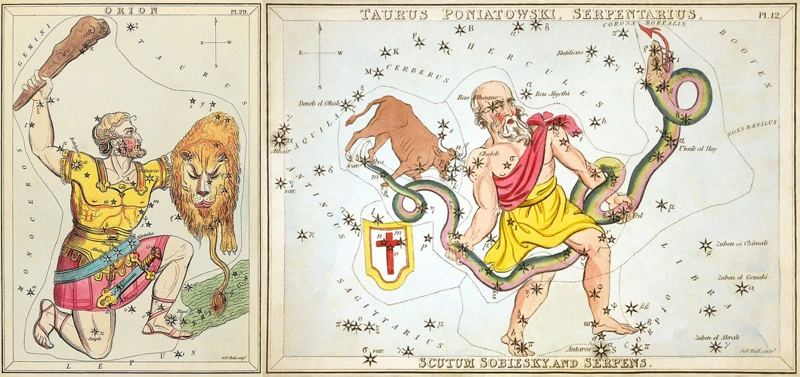
Beowulf’s Boast is a pivotal moment in the hero’s journey, showcasing his strength, bravery, and self-assurance. As Beowulf arrives in the land of the Danes, he boldly declares his intentions to King Hrothgar. In his boastful speech, Beowulf recounts his previous feats of valor and makes grand claims of his ability to defeat Grendel. He proudly proclaims, “My lord Higlac might think less of me if I let my sword / go where my feet were afraid to, if I hid / behind some broad linden shield: my hands / alone shall fight for me, struggle for life / against the monster” (lines 681-685). With these words, Beowulf showcases his unwavering confidence and refusal to back down from any challenge. His declaration not only impresses King Hrothgar and the people of Denmark, but it also sets the stage for the epic battle that will soon ensue. This moment in the story highlights Beowulf’s larger-than-life personality and his belief in his own prowess as a hero, making it a significant step in his journey.
The Battle with Grendel In the climactic encounter known as the Battle with Grendel, Beowulf faces off against the fearsome monster who has been wreaking havoc on the kingdom of Denmark. With his superhuman strength and unwavering determination, Beowulf proves himself to be a formidable opponent to Grendel. As the night falls and the mead-hall becomes shrouded in darkness, Beowulf waits, his heart pounding with anticipation. Grendel, driven by his insatiable hunger for destruction, bursts into the hall, his grotesque form illuminated by the flickering torchlight. A fierce and intense struggle erupts between the two adversaries as they exchange powerful blows. Beowulf’s prowess and valor are on full display as he grapples with Grendel, finally dislocating the monster’s arm . The battle unleashes a cacophony of screams and roars, echoing through the hall, as the forces of good and evil collide with a titanic force. In a final act of desperation, Grendel attempts to escape, but his fate has been sealed. Beowulf, with an unyielding grip, tears off Grendel’s arm, sending the wretched creature fleeing into the darkness, defeated and on the brink of death. The mead-hall, once a place plagued by fear, is now filled with triumphant cheers and cries of victory. This epic clash is a pivotal moment in Beowulf’s journey, solidifying his reputation as a legendary hero and setting the stage for the battles yet to come.
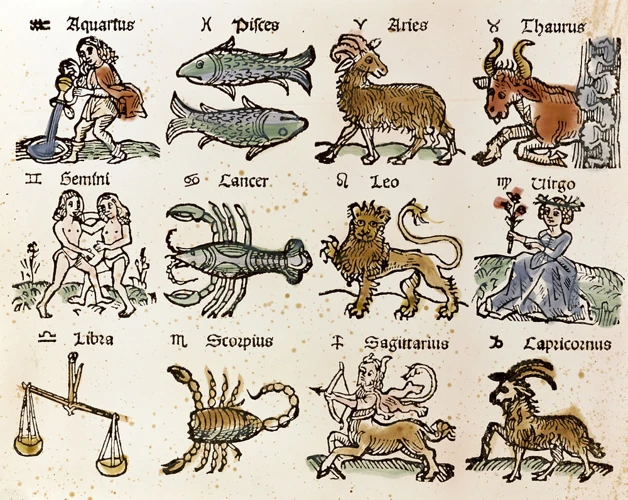
The Battle with Grendel’s Mother is a pivotal moment in Beowulf’s heroic journey. After successfully slaying Grendel, Beowulf faces yet another formidable opponent – Grendel’s Mother. Determined to avenge her son’s death, she is a creature of immense strength and ferocity. The battle takes place in the treacherous depths of her lair, a dark and forbidding underwater cavern. Beowulf, armed with a mighty sword, plunges into the depths to confront this fearsome foe. The fight is intense, with both combatants unleashing their full might. Grendel’s Mother proves to be a formidable adversary, nearly overpowering Beowulf at times. However, true to his heroic nature, Beowulf perseveres. In a moment of desperation, he spots an enchanted sword, a weapon designed to slay supernatural beings. With a swift strike, he deals a fatal blow to the monster, ultimately vanquishing her. The Battle with Grendel’s Mother showcases Beowulf’s unwavering determination and showcases his ability to overcome seemingly insurmountable odds. This triumph further solidifies his status as a legendary hero, leaving a lasting impact on the tale of Beowulf.
Beowulf’s Death marks a pivotal moment in the epic saga, as the aging hero faces his final battle against a formidable adversary. In his twilight years, Beowulf encounters a fierce fire-breathing dragon that threatens his kingdom. Despite his advanced age, Beowulf valiantly faces the dragon, displaying unwavering courage and determination. The battle is intense and fraught with danger, as the dragon’s fiery breath and razor-sharp claws pose a grave threat to Beowulf’s life. In a dramatic turn of events, Beowulf’s trusted comrade, Wiglaf, proves his loyalty and valor by coming to Beowulf’s aid, reinforcing the theme of honor and loyalty throughout the epic. Together, they engage in a fierce struggle, but Beowulf is mortally wounded in the process. As Beowulf nears his end, he reflects on his life and valiant deeds, ensuring that his legacy lives on. Wiglaf, witnessing the hero’s imminent demise, mourns his leader’s passing. The death of Beowulf marks the end of an era, as the kingdom mourns the loss of its beloved hero and prepares for a new chapter in its history. Through his demise, Beowulf’s noble sacrifice and unwavering dedication to his people serve as a testament to the timeless qualities of heroism and selflessness.

The Transformation and Atonement
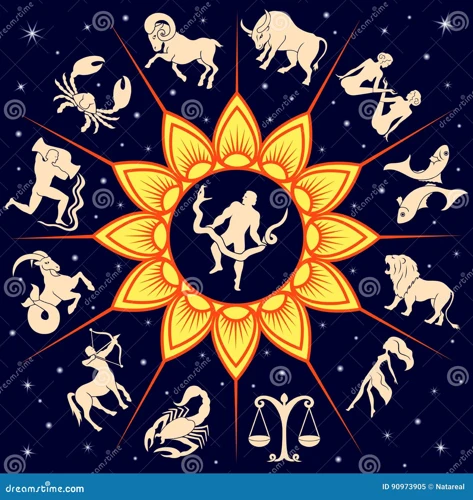
Beowulf’s Legacy is a testament to the enduring impact of his heroic deeds and the values he embodied. After successfully defeating Grendel and his vengeful mother, Beowulf’s fame and reputation spread far and wide. He returned to his homeland, Geatland, where he ruled as a wise and just king for many years. During his reign, Beowulf’s courageous exploits became legendary, inspiring future generations of warriors and leaders. His unwavering commitment to honor, loyalty, and bravery served as a model for others to follow. Beowulf’s legacy also extended beyond the realm of warfare, as he was known for his generosity and benevolence towards his subjects. He rewarded his loyal warriors with lavish gifts, ensuring their loyalty and devotion. These acts of kindness and fairness solidified Beowulf’s place in history as not only a hero but a compassionate leader. Even in death, Beowulf’s legacy lived on, as he was mourned by his people and his noble deeds continued to be recounted in tales and songs, inspiring future generations to strive for greatness.
Rebirth and the Return
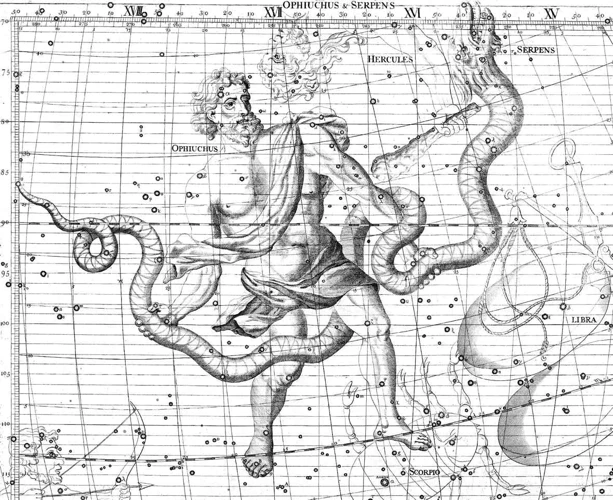
Beowulf’s Burial marks the poignant conclusion of this epic tale, as the fallen hero is laid to rest in a grand ceremony befitting his legendary status. After Beowulf’s valiant battle against the dragon, he succumbs to his injuries, leaving behind a legacy of bravery and heroism. His loyal followers mourn his passing, and preparations are made for his burial. A magnificent pyre is constructed, adorned with treasures from far-flung lands and symbols of his victories. The pyre is set ablaze, flames reaching towards the heavens as a testament to Beowulf’s indomitable spirit. As the fire crackles and consumes the wood, Beowulf’s loyal warriors bid their final farewell to their fallen leader. They honor him with solemn words, recounting his heroic deeds and the lasting impact he has made on their lives. The ashes of Beowulf, the mighty hero, are then collected and placed in a grand tomb, a solemn reminder of his sacrifice and the endurance of his legend. In the end, Beowulf’s burial becomes a symbol of his immortality, as his memory lives on in the hearts of those who witnessed his heroic journey.
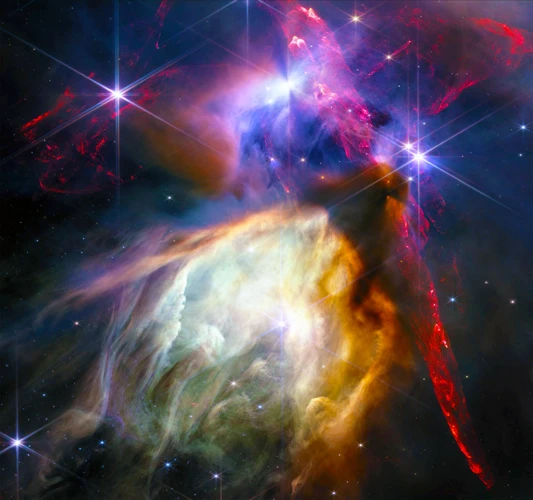
Frequently Asked Questions
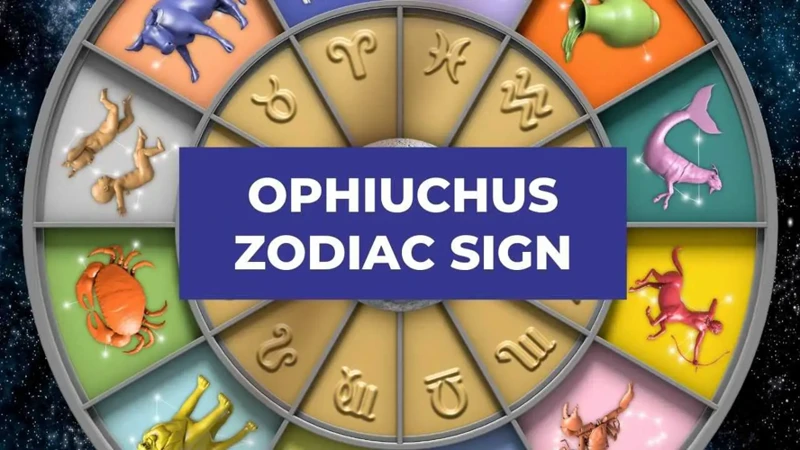
Beowulf is the legendary hero and protagonist of the ancient Anglo-Saxon epic poem, “Beowulf.” He is renowned for his exceptional strength, bravery, and his unwavering dedication to protecting the innocent.
The story of Beowulf follows the hero’s quest to rid the kingdom of Denmark from the monstrous grip of Grendel and his mother. It explores themes of heroism, honor, and the eternal battle between good and evil.
Grendel is a fearsome monster who terrorizes the people of Denmark. He is depicted as a relentless and bloodthirsty creature, driven by his hatred for humanity and compelled to unleash havoc and destruction.
Grendel’s attacks symbolize the never-ending struggle between chaos and order, darkness and light. They serve as a call to action for Beowulf, prompting him to embark on his heroic journey and confront the forces of evil.
Grendel’s Mother is a formidable and vengeful creature who seeks revenge for the death of her son. She dwells in an underwater lair and possesses her own supernatural powers, making her a formidable opponent for Beowulf.
The “Abyss” refers to the pivotal moment in Beowulf’s journey when he faces the ultimate challenge: battling Grendel’s Mother. This symbolic descent into the depths represents a test of Beowulf’s strength, courage, and resolve.
Beowulf’s journey concludes with his ultimate sacrifice, as he faces a fearsome dragon in his old age, defending his kingdom one last time. Though he perishes in the battle, his legacy endures, leaving behind a legacy of heroism and honor.
Beowulf’s legacy is one of heroism and inspiration. His heroic deeds and selflessness serve as a reminder of the enduring power of courage and honor, influencing generations to come.
The story of Beowulf reflects the values and ideals of Anglo-Saxon culture, such as loyalty to one’s king, the importance of kinship, and the belief in fate and destiny. It provides insights into the society, customs, and beliefs of the time.
Beowulf embodies the archetype of the classic hero’s journey, as he receives a call to action, faces and overcomes various trials and foes, experiences transformation and atonement, and ultimately leaves behind a significant impact on his world.
- Beowulf- Hero’s Journey by Ashley Deaner
The main protagonist of the story is Beowulf, a legendary Geatish warrior.
Beowulf’s arrival in Denmark marks the beginning of his heroic journey and the start of his quest to rid the land of the monstrous Grendel.
Beowulf possesses extraordinary strength, courage, and noble ideals. He is also known for his loyalty, bravery, and determination in the face of danger.
Grendel is a fearsome monster, descendant of Cain, and he attacks the people of Denmark out of envy and resentment towards their happiness and prosperity.
During the battle, Beowulf manages to overpower Grendel, tearing off his arm and ultimately causing his death. This victory brings relief and joy to the people of Denmark.
In the Abyss, Beowulf faces the daunting challenge of battling Grendel’s vengeful mother, who seeks retribution for the death of her son. This battle tests Beowulf’s strength and courage to their limits.
Beowulf meets his demise while fighting a fierce dragon in his old age. Despite his valiant efforts, he is fatally wounded during the battle.
Beowulf’s legacy lies in his heroic deeds and his unwavering commitment to protect others. He is remembered as a great warrior and leader who selflessly fought for the greater good.
After his death, Beowulf is given a grand and honorable burial. His people celebrate his life and mourn his passing, recognizing his immense contributions and sacrifices.
Beowulf’s hero’s journey teaches us the importance of courage, honor, and selflessness. It emphasizes the value of standing up against evil and protecting others, even in the face of great challenges and adversity.
- Analysis Of Beowulf: A Hero’s Journey
- Exploring The Compatibility Between Ophiuchus And The Fire Signs
- The Meaning And Significance Of Lucky Numbers In Astrology
- Exploring The Compatible Zodiac Signs For Ophiuchus
Leave a Comment Cancel reply
Save my name, email, and website in this browser for the next time I comment.
most recent

Astrology Traits , Myths vs Facts
Ophiuchus and relationships: how to navigate love.

Unraveling the Secrets of Ophiuchus: Personality Traits Explored

Unveiling the Power of Ophiuchus: Understanding the 13th Zodiac Sign

Understanding the True Traits of Ophiuchus

Unlocking the Power of Ophiuchus in Career Decisions

Myths vs Facts , Zodiac Compatibility
Understanding the influence of ophiuchus on water signs.
© Mystery of Ophiuchus - 2023
PRIVACY POLICY
Terms of Use
Write For Me
The 12 Steps of the Hero’s Journey

The hero’s journey is a timeless storytelling pattern found in many works of literature and mythology. It provides a framework for creating compelling stories that resonate with audiences. This article explores the hero’s journey in detail, providing a complete resource for those seeking information on this topic and a guide for recognizing and understanding it in writing .
Give your writing extra polish Grammarly helps you communicate confidently Write with Grammarly
What is the hero’s journey?
The hero’s journey is a widely recognized storytelling pattern that has been used for centuries in literature and mythology. It is a framework that helps writers create compelling stories that resonate with their readers by depicting a protagonist who goes through a transformative journey. The journey usually involves a series of challenges that the protagonist must overcome in order to achieve their goal. The hero’s journey is also known as the monomyth , a term coined by Joseph Campbell in his book The Hero With a Thousand Faces .
The monomyth , or hero’s journey, is a storytelling pattern that transcends genres and time periods. It is a timeless concept that continues to be relevant today because it speaks to universal themes such as self-discovery, transformation, and growth.
Variations on the hero’s journey
While the twelve steps of the hero’s journey have become the most widely recognized pattern for storytelling, there are variations of the hero’s journey that have been developed over time. Some feature additional steps, while others emphasize different aspects of the journey. For example, Christopher Vogler developed a seven-step variation of the hero’s journey that emphasizes the role of archetypes in storytelling. Another variation, developed by Maureen Murdock, focuses on the journey of the female hero and includes steps such as separation, initiation, and return.
What is the purpose of the hero’s journey?
The purpose of the hero’s journey is to create a compelling narrative that resonates with readers on an emotional level. The hero’s journey is a timeless plot that has been used to create some of the most memorable works of literature and mythology. It speaks to themes of human experience, including self-discovery, transformation, and growth.
The 12 steps of the hero’s journey
The hero’s journey typically involves a series of specific steps that the hero must take to achieve their goal or complete their quest. The fundamental steps include:
The call to adventure , where the hero is presented with a challenge or opportunity that sets them on their path; the crossing of the threshold , leaving behind the known world and venturing into the unknown; various tests, trials, and allies that help the hero overcome obstacles along the way; a confrontation with a major enemy or obstacle; and finally, the return home , transformed and changed by their experiences.
Here are the twelve steps of the hero’s journey:
1 The call to adventure
This is the moment when the hero receives a call to adventure, which could come in the form of a message, a dream, or an encounter with a mentor or guide.
2 The refusal of the call
At this stage, the hero may initially refuse the call to adventure, often due to fear, doubt, or a sense of inadequacy.
3 Meeting the mentor
The hero encounters a mentor or guide who provides support, advice, and guidance on the journey ahead.
4 Crossing the threshold
The hero leaves behind the known world and crosses the threshold into the unknown, often encountering tests, trials, and challenges along the way.
5 Tests, allies, and enemies
The hero must navigate a series of tests, trials, and challenges, often with the help of allies and the opposition of enemies.
6 The approach to the inmost cave
The hero approaches the innermost cave or the heart of darkness, often facing their greatest fears and challenges.
7 The ordeal
This is the moment of the hero’s greatest challenge, where they face a major obstacle or enemy and must overcome it to continue their journey.
8 The reward
The hero achieves a reward—often in the form of knowledge, insight, or a powerful object—that helps them on their journey.
9 The road back
The hero begins the journey back, often encountering new challenges and obstacles along the way.
10 The resurrection
The hero experiences a moment of death and rebirth, often symbolized by a physical or metaphorical transformation.
11 The return
The hero returns home, transformed and changed by their experiences, armed with new knowledge and insights that they can use to benefit their community.
12 The freedom to live
The hero achieves a state of freedom and enlightenment, often living happily ever after or in a state of balance and harmony.
These steps provide a roadmap for creating powerful and impactful stories that audiences can relate to across cultures and time periods.
Examples of the hero’s journey
Examples of the hero’s journey can be found in many works of literature and mythology. Some examples include:
- The Odyssey by Homer
- The Left Hand of Darkness by Ursula K. Le Guin
- The Lord of the Rings by J.R.R. Tolkien
- The Hunger Games by Suzanne Collins
- The Lion, the Witch, and the Wardrobe by C.S. Lewis
- The Handmaid’s Tale by Margaret Atwood
- The Hero and the Crown by Robin McKinley
- Star Wars by George Lucas
Hero’s journey FAQs
The hero’s journey typically involves a protagonist who goes on a journey of self-discovery. The journey usually involves a series of challenges that the protagonist must overcome in order to achieve their goal.
What are the steps of the hero’s journey?
Some common elements of the hero’s journey include the call to adventure, refusal of the call, meeting the mentor, crossing the threshold, tests, allies, and enemies, the approach, the ordeal, the reward, the road back, the resurrection, the return, and the freedom to live.
Are there different types of hero’s journeys?
Some examples of variations on the hero’s journey are the heroine’s journey, the antihero’s journey, and the tragic hero’s journey. These variations add depth and complexity to the basic structure of the hero’s journey.
This article was written with support from Grammarly’s generative AI.


IMAGES
VIDEO
COMMENTS
Beowulf offers the head of Grendel to Hrothgar and in return he receives treasures. Beowulf goes back to Geatland, shares his treasure, and eventually becomes king, ruling for 50 years. Beowulf gives up his crown to become a warrior again and goes to fight the dragon He kills the dragon but in the he is bit on the neck.
Works Cited Return Beowulf- Hero Journey "Approach" Photograph. Beowulf blogpost. Web. 25 Sept. 2014 "Beowulf" Photograph. Screen Rant. Web. 23 Sept. 2014 "Beowulf's Boat" Photograph. TNation. Web. 24 Sept. 2014 "Death" Photograph. Quilds Outpost.Web. 28 Sept. 2014 "Ending"
The Hero's Journey and Its Influence Beowulf's Hero's Journey. Beowulf's story can be seen as an early form of the Hero's Journey, a narrative structure that has been influential in storytelling across cultures. His journey includes elements such as the call to adventure (his decision to fight Grendel), crossing the threshold ...
After clicking "Copy Activity", update the instructions on the Edit Tab of the assignment.) Student Instructions. Use the story of Beowulf and map it to the narrative structure of the Hero's Journey. Click "Start Assignment". Depict and describe how the chosen character's story fits (or does not fit) into each of the stages of the Hero's Journey.
7 Stages of the Heroic Journey. 1. call to adventure. 2. reversal of fortune. 3. tests and helpers. 4. triumph. 5. hero is called to help again. 6. hero is no longer the warrior he once was. 7. hero's failure. Ultimately, Beowulf is not a triumphant hero, as he does not defeat his final foe; however, he is a tragic hero and his story follows ...
The people needed a hero of epic proportions, so they called upon Beowulf. (No Refusal) Beowulf could not refuse the plight of King Hrothgar, so he gathered his best men and set off for Denmark. King Hrothgar becomes Beowulf's mentor, though his influence is not seen at first. Beowulf uses the incident with Grendel as a guide when he becomes king.
Beowulf, heroic poem, the highest achievement of Old English literature and the earliest European vernacular epic.The work deals with events of the early 6th century, and, while the date of its composition is uncertain, some scholars believe that it was written in the 8th century. Although originally untitled, the poem was later named after the Scandinavian hero Beowulf, whose exploits and ...
Reviewing hero's journey examples can simplify this concept and aid in understanding. Explore each step of the journey and clear examples. ... The Old English poem Beowulf is a great example of the hero's journey. You'll recognize the following stages: Ordinary world - Greatland is Beowulf's ordinary world. ...
Analysis of the 12 Steps of Hero's Journey in Beowulf. In modern-day movies and novels, the hero captures the audience's attention as they take on an epic journey. In literature, an epic poem is described as a long narrative poem outlining the heroic events taken by a character of high status. Society obsesses over the battles, victories, and ...
The Hero's Journey is a common narrative archetype that has been used in literature for centuries. One of the most famous examples of the Hero's Journey is the epic poem Beowulf. This ancient tale follows the journey of the hero Beowulf as he battles monsters, seeks glory, and ultimately meets his fate.
Stages of a Hero's Journey in Beowulf Ian Zakos Stage 1: The ordinary world Stage 1 Beowulf is not a relatable hero because he is not designed to be such The properties that an Anglo Saxon culture values are strength and a strong moral code "In his day, he was the mightiest man on
Here are some resources to get you started on facilitating this Beowulf project: Play this hero's journey overview - The Hero's Journey and the Monomyth: Crash Course World Mythology #25; Create a hero story choice board with lots of options from around the word. Though I have not previewed all these stories, here are some places to start ...
Beowulf battles monsters (physically) specifically the dragon. When Beowulf meets Wiglaf. Wiglaf helps and gives advice. When Beowulf comes back with gifts and presents them to Hygelac and praises him. Beowulf has become older and is too old to do what he used to do (fighting). The special solution was Grendels head.
The poem Beowulf is known to follow the adventure of the hero described in Campbell's monomyth. The hero's journey consists of three rites of passages: separation, initiation, and return. Beowulf endures each of these stages throughout the epic poem, so his journey does follow Campbell's monomyth. The separation is the first stage a hero ...
process of the hero's journey. Beowulf as a text and film version provide an excellent starting point for tracing the process that a male character must go through in order to properly become a hero. I will examine this process in both of these versions of the story through a Jungian psychoanalytical lens.
9. Apotheosis 5. The Belly of the Whale The apotheosis is when Beowulf defeats Grendel and his mother. He is in a state of all knowing and strength. He is somewhat godly because everyone worships him. The belly of the whale is when Beowulf goes underwater to Grendel's lair. A
Unraveling the Epic Tale of Beowulf. George J. Kelley. November 17, 2023. Legends Mythology
1007 Words5 Pages. Beowulf follows the differents parts of the hero's quest or journey. The story shows details such as his call to adventure and the road of trials. Beowulf does not follow every aspect of the hero's such as all stories. There are parts in the story where Beowulf lines up with the quest and shows similarities.
Illustration of the hero's journey. In narratology and comparative mythology, the hero's journey, also known as the monomyth, is the common template of stories that involve a hero who goes on an adventure, is victorious in a decisive crisis, and comes home changed or transformed.. Earlier figures had proposed similar concepts, including psychoanalyst Otto Rank and amateur anthropologist Lord ...
Beowulf Hero's Journey Chart Names: Megan Johnston Crisis Grendel arrives in the hall where everyone is waiting for him and begins to kill men. A whole fight broke out and Beowulf left all of the people in the layer to protect them. He fought for his people. The dragon scorches leaving him hurt Treasure Beowulf cut off Grendel's arm. "Beowulf was granted The glory of winning" (817-818).
The fundamental steps include: The call to adventure, where the hero is presented with a challenge or opportunity that sets them on their path; the crossing of the threshold, leaving behind the known world and venturing into the unknown; various tests, trials, and allies that help the hero overcome obstacles along the way; a confrontation with ...
Beowulf Hero's Journey Essay. This essay sample was donated by a student to help the academic community. Papers provided by EduBirdie writers usually outdo students' samples. In many cultures heroism is defined very differently, for example in Christianity a hero is considered helping those in need and putting others before yourself.
In beowulf's case, that threat was Grendel. The journey itself could be labeled as another part of the hero's quest called "The Approach" where the hero and his/hers allies must prepare for a challenge (Vogler 1). However, there was another journey occurring as Beowulf went to fight Grendel, the hero's inner journey.